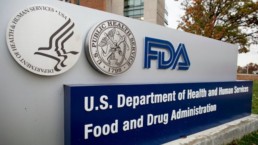FDA Inspections in the nicotine industry
- Whether you were already inspected by the FDA, or need to prepare for an inspection, we can assist you to comply with what we know from first- hand experience that FDA wants to see and will request during an inspection.
- We prepared for, and oversaw several successful FDA inspections of tobacco manufacturing and warehousing facilities, and have a constructive, cost effective approach to your compliance and quality system, including standard operating procedures (SOPs), corrective and preventive actions, as well as post-inspection remedial actions.
- We will train your employees how to deal with FDA investigators, we will characterize the rights and obligation of the FDA investigators (based on the latest FDA Investigations Operations Manual, or IOM ) and we will join you during the FDA inspection, if practicable.
- We will communicate with the FDA on your behalf in connection with any product recall, post-inspection remediation and other compliance and enforcement matters.
FDA must inspect each registered establishment that manufactures, compounds, or processes tobacco products at least biennially from the date of registration. FDA began inspecting tobacco establishments on October 1, 2011. FDA investigators from ORA inspect tobacco establishments to ensure that they are in compliance with provisions of the Food, Drug, and Cosmetic Act and that products are not adulterated or misbranded. Thus, FDA investigates compliance with, among other, registration and product listing; ingredient listing; requirements for packaging, labeling, and advertising; and marketing authorization for certain tobacco products. Although FDA has the authority to establish Good Manufacturing Practices for tobacco products, and to hold manufacturers to those standards, it has not yet done so.
During these inspections, FDA reviews processes and procedures; observes and evaluates manufacturing operations; documents and collects information; identifies violations; communicates potential violations and objectionable conditions to the establishment’s management; and documents any proposed corrective action plans. Following an inspection, FDA issues one of three classifications based on its findings: “No Action Indicated,” when the inspectors find no objectionable conditions or practices; “Voluntary Action Indicated,” when findings are serious enough to record but do not require regulatory action; or “Official Action Indicated,” when inspectors find significant, objectionable conditions or practices and regulatory action is warranted. During the next routine inspection of an establishment, FDA follows up on the outcome of the actions it recommended. If FDA finds that the establishment did not address its recommendations, it may take an advisory action, such as issuing a warning letter, or it may take an enforcement action, such as imposing a civil monetary penalty, making a seizure, issuing an injunction, or launching criminal prosecution.
FDA also oversees marketing activities related to tobacco products, by observing websites and other types of marketing materials to ensure compliance with the law.
Our team has prepared for successful tobacco manufacturing facilities inspections, and has extensive experience in engaging with the FDA during an inspection.


